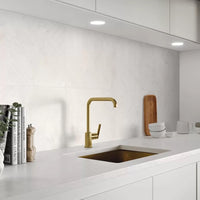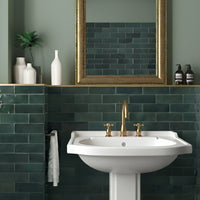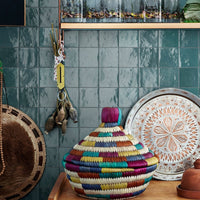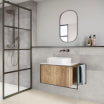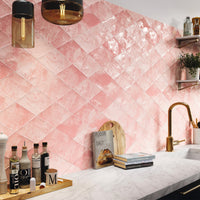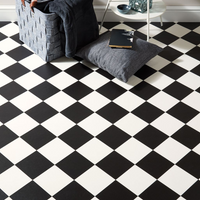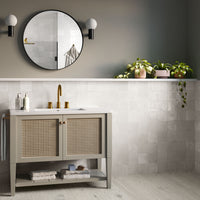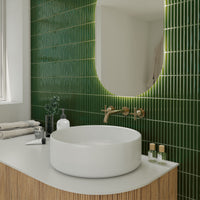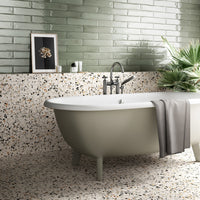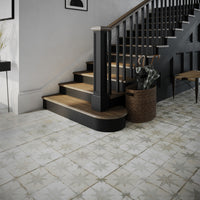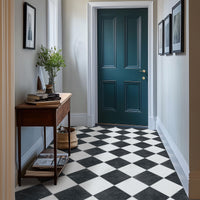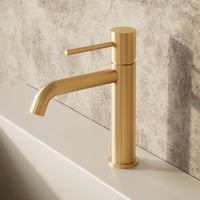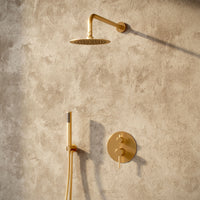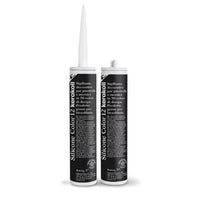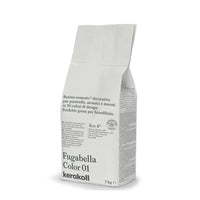Wood effect tiles are rather popular at the moment, and it’s easy to see why. With their warm appeal and easy-to-live with attitude, they contain all of the character of natural timber and none of the negatives.
But with so many handsome planks out there, picking the right one can sometimes be a little tricky. And just to throw a spanner in the works, there’s plenty of other good-looking tiles that keep catching your eye.
If you can’t make up your mind, why not try picking another design to sit alongside your timber tiles? If this sounds a little daunting don’t worry – we want to show you how you can combine the two and be confident of a fantastic finish!
Mix and Match
 If someone asked us for a way to combine patterns and planks, we’d admit to being a little stumped. Until we saw this really clever idea combining Woodland Walnut with some rather delightful decorative tiles. It’s a really novel way to turn an understated floor into something more wow, without going over the top.
If someone asked us for a way to combine patterns and planks, we’d admit to being a little stumped. Until we saw this really clever idea combining Woodland Walnut with some rather delightful decorative tiles. It’s a really novel way to turn an understated floor into something more wow, without going over the top.
To get the look, we’d recommend laying patchwork tiles at random, to give the impression you’ve just thrown a few bits together. Be sure to use ‘tacos’ that are the same width as the planks, otherwise you’ll run into all kinds of trouble.
Perfect Balance
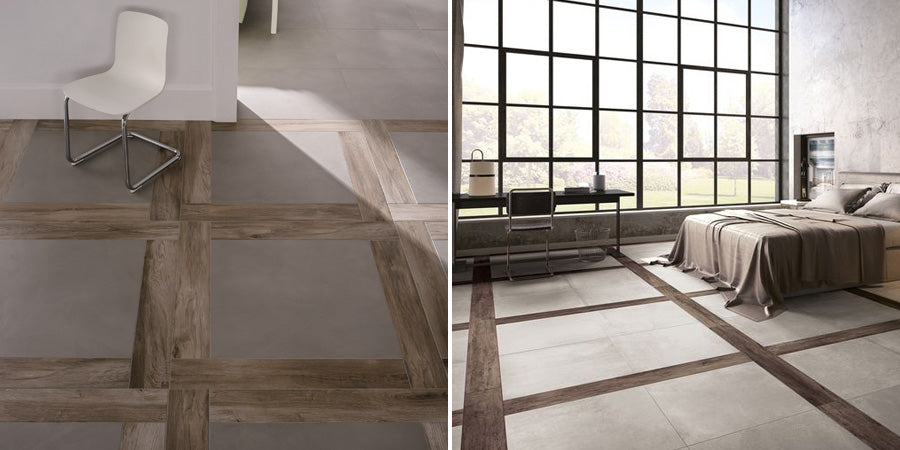 A style that we’ve seen a number of times on our recent travels to Italy is this; a look that combines long porcelain planks with square cement tiles. And as we all know, Italians know their style; what they do today we’ll all be doing tomorrow.
A style that we’ve seen a number of times on our recent travels to Italy is this; a look that combines long porcelain planks with square cement tiles. And as we all know, Italians know their style; what they do today we’ll all be doing tomorrow.
So get ahead of the trend… trust us, it works – the coolness of the grey balances out the warmth of the wood perfectly. We think this combination works best when there’s contrast – so pick a long, dark plank such as Woodstyle Walnut and a pale cement effect tile such as Cemento Light Grey for maximum effect.
Seamless Transition
 Wow, this is the type of floor we’d love to come up with when we put our creative hats on. Here, our Memory hexagons meet porcelain planks, but instead of the sharp straight edge you might expect, there’s more of a gradual tradition and the surfaces seem to ‘flow’ into each other.
Wow, this is the type of floor we’d love to come up with when we put our creative hats on. Here, our Memory hexagons meet porcelain planks, but instead of the sharp straight edge you might expect, there’s more of a gradual tradition and the surfaces seem to ‘flow’ into each other.
It’s a really innovative way to make two different floors meet in an open plan space, and one of the best examples we’ve seen is the Italian farmhouse floor by architect Paola Navone, shown in the very first image.
To get the look, your tiler will have to carefully cut the ends of the wood effect tiles to match the edges of the honeycombs. Make sure that the different shades are scatted at random for a more wholesome and rustic flavour.
Elegant Parquet
 In both images above, a timeless marble floor is broken up by lengths of dark wood tiles, for an elegant take on traditional parquet flooring. It’s a really simple way to add detail and a luxurious finish to living spaces – and pretty inexpensive to boot.
In both images above, a timeless marble floor is broken up by lengths of dark wood tiles, for an elegant take on traditional parquet flooring. It’s a really simple way to add detail and a luxurious finish to living spaces – and pretty inexpensive to boot.
It might not be a new idea to mix natural materials, but we do think it’s a very good one, especially when the results end up looking this good. If you’re looking to recreate this look at home, marry long and thin planks such as Woodstyle Walnut to polished Calacatta tiles for a dramatic contrast.
Colour Blocking
 We recently talked about how colour blocking can create eye-catching focal points and as these images show, combining wood and marble tiles is a great way to achieve this.
We recently talked about how colour blocking can create eye-catching focal points and as these images show, combining wood and marble tiles is a great way to achieve this.
In the fist picture, one row of Woodland Oak forms a contrast, in both tone and size, to the brick tiles above. And in the second, the same wood effect tiles meet slabs and hexagons of Bistrot Calacatta, forming a natural divide between the open-plan bedroom and the bathroom.
, forming a natural divide between the open-plan bedroom and the bathroom.